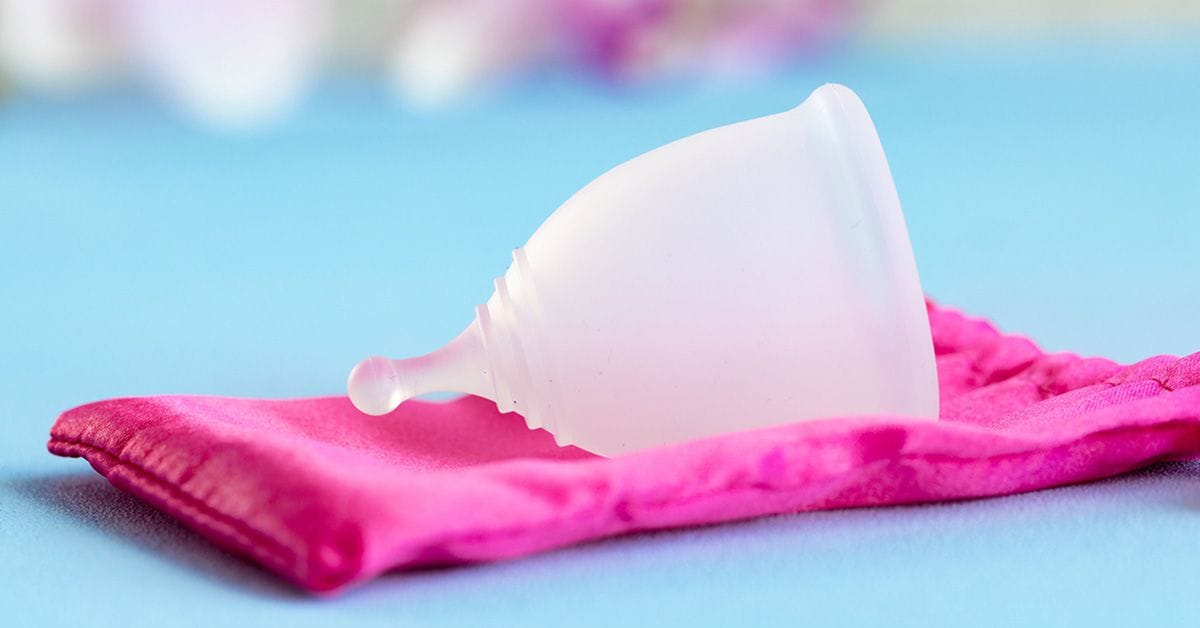A new menstrual cup design aims to solve common pain points with smart materials, bringing science to the forefront of sustainable period care.

Menstrual cups are a sustainable, reusable alternative to pads and tampons, offering reduced waste and lower risks of allergies, infections, and toxic shock syndrome. They also help minimize exposure to substances like PFAS, which have raised health concerns in some disposable products.
But in practice, many people experience difficulties with menstrual cups. A 2025 survey in Australia found that 54% of users experienced leaks, and 25% reported pain or discomfort in the first cycle of use.1 Almost half struggled to remove the cup on their first attempt, and 17% needed assistance. While these figures improved with repeated use, it’s easy to see why only about half of those who try a menstrual cup stick with it. Hygiene concerns, especially in public bathrooms, remain a major barrier, with 59% of non-users believing reusables are less hygienic than disposables.2
Keeping it clean
Proper cleaning is essential to prevent infection, but the process typically requires hot water or steam—challenging in regions with limited access to clean water. While wealth is a key driver of unequal access to menstrual hygiene management, other socio-economic, environmental, and household factors also play a role in low- and middle-income countries.3
In other regions, the challenge is more around messy removal and the risk of spills. To address this, a Canadian research team has developed a self-cleaning menstrual cup.4 The new cup, recently reported on in ACS Applied Materials & Interfaces, features a lubricant-infused coating that resists bio-adhesion, helping to prevent biofilms and reduce blood clotting. This surface innovation draws on similar coatings used for intranasal splints, which have shown promise in repelling bacteria and suppressing blood clot formation for up to seven days.5
Smarter Absorption
The cup also contains a biodegradable absorbent tablet made from alginate—a polymer derived from brown algae, widely used in tissue engineering and wound healing.6,7 In lab tests, the new design prolonged clotting time and demonstrated self-cleaning properties, with minimal blood residue and a significant reduction in bacterial adhesion and biofilm formation. The fibrous tablet retained blood and eliminated spills during removal, making it easier to empty the cup without mess.
This new design bridges advanced materials science and women’s health, offering a practical solution to hygiene and usability challenges and a promising step toward wider adoption of reusables. By making menstrual cups easier and safer to use, researchers are helping to expand global access to sustainable period care, especially where resources are scarce.
Explore related research in ACS journals:
Enzymatic Polysaccharide-Based Aerogel Absorbents for Sustainable Personal Hygiene Applications
Sefiu A. Rasaki, Christian P. Lenges, Natnael Behabtu, Steven L. Bryant, and Milana Trifkovic*
DOI: 10.1021/acssuschemeng.3c07006
Per- and Polyfluoroalkyl Substances in Reusable Feminine Hygiene Products
Alyssa Wicks, Sydney Brady, Heather D. Whitehead, Thomas Hedman, Alison Zachritz, Marta Venier, and Graham F. Peaslee*
DOI: 10.1021/acs.estlett.5c00553
Plastic Additives in Single-Use and Reusable Menstrual Products: Potential Implications for Human Health and the Environment
Lara Cioni*, Júlia Calvo, and Ethel Eljarrat
DOI: 10.1021/acs.est.5c09064
An Alginate-Based Construct for Improved Regeneration of Tissues by Angiogenesis Promotion: A Review
P. Mohammadi, M. Habibizadeh*, R. Amirian, M. Valadbeigi, Zh. Izadi, N. Forouzideh, and M. Moradi*
DOI: 10.1021/acsbiomaterials.5c00767
Toward Sex-Specific Biomaterials Innovation: A Perspective
Gerry L. Koons*
DOI: 10.1021/acsbiomaterials.5c00342
References:
- Hennegan, J. et al. Menstrual cup acceptability and functionality in real-world use: A cross-sectional survey of young people in Australia. Aust. N. Z. J. Obstet. Gynaecol. 2025, 65 (3), 382–389.
- Mintel. Green period—a fifth of British women have purchased period pants. https://www.mintel.com/press-centre/green-period-a-fifth-of-british-women-have-purchased-period-pants/ (accessed Nov 2025).
- Rossouw, L. and Ross, H. Understanding Period Poverty: Socio-Economic Inequalities in Menstrual Hygiene Management in Eight Low- and Middle-Income Countries. Int. J. Environ. Res. Public Health 2021, 18 (5), 2571.
- Moghimikandelousi, S. et al. Self-Cleaning Menstrual Cups with Plant-Based Biodegradable Superabsorbent Fibrous Tablets for Hygienic and Sustainable Period Care. ACS Appl. Mater. Interfaces 2025, 17, 44, 61268–61279.
- Kasapgil, E. et al. Polysiloxane Nanofilaments Infused with Silicone Oil Prevent Bacterial Adhesion and Suppress Thrombosis on Intranasal Splints. ACS Biomater. Sci. Eng. 2021, 7, 2, 541–555.
- Zhang, W. et al. Photodynamic Alginate Zn-MOF Thermosensitive Hydrogel for Accelerated Healing of Infected Wounds. ACS Appl. Mater. Interfaces 2023, 15, 19, 22830–22842.
- Zhang, K. et al. Macroporous PEG-Alginate Hybrid Double-Network Cryogels with Tunable Degradation Rates Prepared via Radical-Free Cross-Linking for Cartilage Tissue Engineering. ACS Appl. Bio Mater. 2024, 7, 9, 5925–5938.
